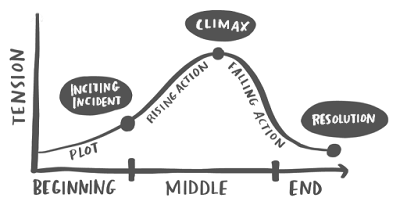The first part of the planning grid
As I said in an earlier blog entry, the planning process in the Literacy Approach starts from the back, with a decision about the kind of text I want my students to produce: a recipe, a description of a character from a book, an explanation of a natural phenomenon or a report of some kind. Then I have to narrow down my choice: will this recipe of mine be a written recipe or a video? Will it be addressed at children, novices or experts? Do I want the report to be a newspaper report of an important event, a radio report about a robbery or an informal report on a school outing for a school yearbook. All these decisions will have an impact on the characteristics of the text I would like my students to produce, and therefore on the teaching points of the unit.
To organize this information, the first part of the planning grid asks teachers to identify the type of text they are going to work on in the unit and provide some information about the students the unit is created for, as well as when it will be implemented. In the third box at the top of the page, the teacher is asked to identify the model text for the unit .
So far we have not mentioned the existence of a model text, but how else should we work on the characteristics of a given text type if not by first enjoying, and then analysing, a model text? This means that if my students are going to produce a video recipe, my model text is going to be a video recipe. Students are going to find out what parts a video recipe consists of, how the camera focuses on the ingredients more than on the presenter, and how time lapse is used to speed up the modeling that is part of a recipe. From the model text they are also probably going to learn useful vocabulary about cooking, or the structure of sentences typically used in recipes or the way quantities are expressed. All of htese elements constitute the teaching points that are the focus of the large box ìn the centre of the document.
To guide teachers' attention to different elements that possibly need focusing on, a set of categories have been created and placed in the two lefthand columns. The first of these focuses on elements of the text while the second focuses on linguistic elements. This is followed by a number of smaller categories that also could be integrated into the unit of work, such as cultural aspects, learning and thinking strategies or values. These last categories tend to pose fewer problems to teachers than those related to the text and to linguistic aspects, which often cause confusion. I will deal with them in greater detail in my next blog post.
The last column that you can find in the planning grid is the "level expected" column, which makes teachers' expectations explicit as regards the students' performance. We don't often think about what exactly we want our students to be able to do, whether we expect them to use the camera skilfully throughout the video, or whether we just want to see some awareness of the different camera angles and their effect on the viewer. Knowing from the start what we are looking for and at what level, provides the teacher with a clear horizon of expectations to work towards, and makes it possible to build one unit on oters that have gone before, so that the next time my students create a video, I expect them to show some greater skill in using the camera than in this first video, to stay with the example of the video recipe.






Comments
Post a Comment